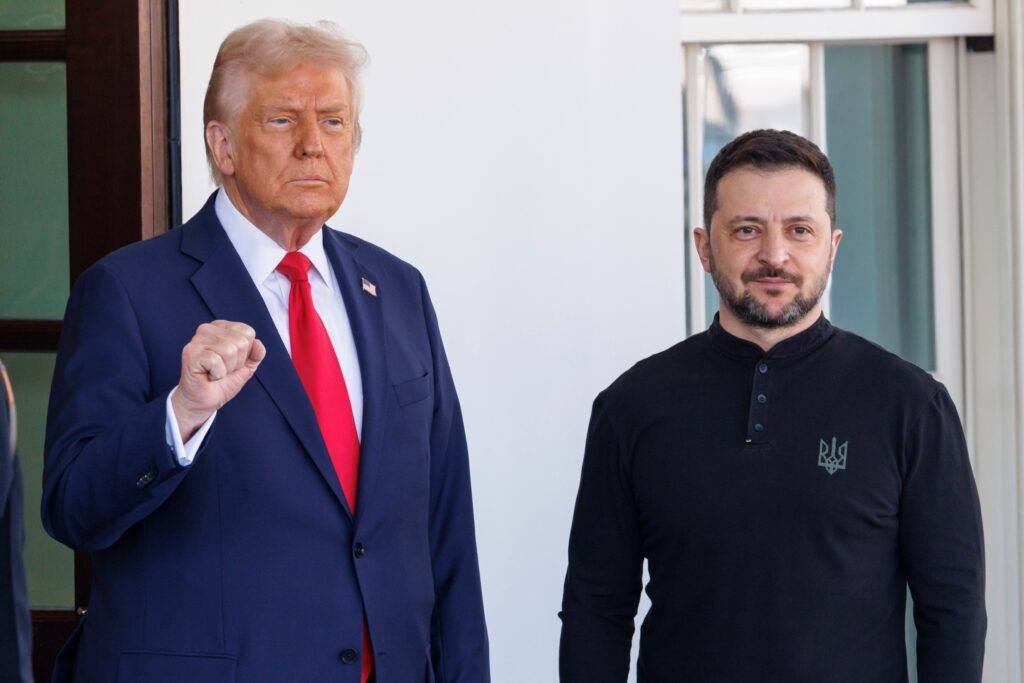The administration of United States President Donald J. Trump, in office for approximately two months, has already brought significant changes to U.S. diplomacy—far exceeding initial consensus forecasts. This is an undeniable fact.
This analysis draws on exchanges with officials, diplomats, and researchers from previous U.S. administrations, as well as decades of conversations with American officers. Over time, the worldview in the United States has shifted significantly and now differs markedly from that of Europe. To navigate uncertainty, one must understand it—even if one does not accept it.
During President Obama’s administration, the United States began to view China as its most significant global competitor. Consequently, efforts were made to shift military focus to Southeast Asia to counter China’s influence. However, this shift has not achieved the desired results. As a result, there is a unified perspective in the United States that Europe must take greater responsibility for its own defence. This view transcends party lines and is particularly justified by economic considerations.
Legacy of Gaullism
The strong U.S. military presence in Europe, meanwhile, is a continuation of the post-World War II occupation, which quickly evolved into the containment of the Soviet Union and the Warsaw Pact’s threat of aggression. Europe has greatly benefited from this American presence, as it enabled Western European nations to reduce defence spending following the dissolution of the Warsaw Pact. Consequently, since the 1990s, the United States has been virtually the only Western nation capable of conducting sovereign global military operations, while other Western countries, including Britain and Germany, have relied on U.S. capabilities. France, however, stands out as an exception due to its legacy of Gaullism, which has driven its global ambitions and independent nuclear capabilities throughout the post-World War II era.
In recent weeks, Europe has demonstrated unprecedented unity, although notable exceptions such as Hungary and Slovakia continue to pose challenges. This newfound cohesion has brought the United Kingdom closer to the EU and opened up new perspectives on Turkey. The reactivation of the Western European Union (WEU) is a possibility, though regional conflicts, such as the Greece-Cyprus-Turkey dispute, remain unresolved.
Finland’s and Sweden’s NATO memberships have proven to be increasingly successful choices, both in terms of timing and substance. In the current geopolitical climate, advancing these memberships would be challenging, but the approaching shift underscores their growing importance. This highlights NATO’s European pillar, as the EU is not a militarily unified entity. Leadership of military operations cannot and should not rely on the EU, which remains primarily an economic union. The reservations of numerous EU countries regarding defence significantly slow and hinder the creation and achievement of a unified stance.
Information Environment
The statements and actions of the Trump administration have not always aligned, as noted by Finnish state leadership. The new administration has adopted rhetoric reflecting a trade model and launched several initiatives that have caused confusion. Discussions surrounding Ukraine and Russia, as well as proposals for resolving the Gaza issue, exemplify this approach.
The concept of tactical truth, borrowed from the Russian mindset, has become a part of everyday strategy. This new approach evaluates the effectiveness of information operations, reacts when necessary, and adjusts responses accordingly. It emphasizes the right of the strongest, often at the expense of politeness and correctness. Rather than being disoriented by this shift, it is essential to adapt and engage with it.
Concrete examples of this new mindset include Vice President JD Vance’s appearance at the Munich Security Conference and Volodymyr Zelensky’s unsuccessful visit to the White House. Zelensky fell into a legal trap orchestrated by Vice President Vance. He might have benefited from studying Prime Minister and later President Paasikivi’s diplomatic strategies with Moscow. Sometimes, lowering oneself is necessary, even when one is right — as demonstrated by President Ryti’s actions in 1944. The March 18 discussion between Trump and Putin unfolded predictably. Russia continues to play for time, believing it holds the advantage and showing no direct interest in a ceasefire. However, the likelihood of a ceasefire is now greater than it was three months ago. The transformation of the information environment demands even greater efforts to discern truth amidst noise and trial balloons
Military Transformation
The U.S. military presence in Europe appears to be decreasing, at least to some extent, resulting in an inevitable redistribution of responsibilities. The United States is shifting its focus toward power projection capabilities and Defence Cooperation Agreements (DCA) with bilaterally beneficial countries. From a Nordic perspective, the North Calotte region and the Arctic as a whole remain strategically significant. For Finland, key areas of importance include Northern Finland, the Baltic Sea region, and Southeastern Finland. Furthermore, economic interests, such as the exploitation of mineral resources, play a role in this strategic equation. Nevertheless, there is no evidence to suggest that U.S.-Finnish military collaboration is diminishing.
Military transformation in Europe is materializing as part of a broader reform initiative, highlighted in the European Commission’s White Paper published on March 19, alongside statements by the High Representative and the European Council. Europe is now undertaking actions that should have been initiated decades ago. Despite years of discussions in Europe regarding defence preparedness, concrete measures have been limited, both in support of Ukraine and in rearmament efforts. Finland, however, has managed to maintain a relatively strong stockpile compared to many other European NATO countries — matched only by Poland. This achievement is particularly noteworthy given Finland’s historically low defence spending. That said, Finland’s current defence expenditures exceeding NATO’s two percent target may be more of a temporary anomaly than a lasting trend, unless new policy decisions are made. Addressing decades of defence underfunding in Europe is feasible but will require significant financial investments and years of effort. This involves not only bridging the gaps left by the United States but also constructing a robust, forward-looking defence strategy focused on strengths rather than merely addressing deficiencies.
The EU Commission’s Defence White Paper underscores several critical areas for development and joint procurement:
- Air and missile defence: an integrated, multi-layered air and missile defence that protects against a full spectrum of air threats (cruise missiles, ballistic and hypersonic missiles, aircraft and UAS).
- Artillery systems: advanced systems including modern artillery and long-range missile systems designed to deliver precise, long-range attacks against land targets (deep precision strike).
- Ammunition and missiles: a strategic stockpile of ammunition, missiles, and components along with sustainable production capacity.
- Drones and counter-drone systems: unmanned systems, including aerial, ground, surface, and underwater vehicles that can be controlled remotely or operate autonomously using advanced software and sensors.
- Military Mobility: a European-wide network of land corridors, airports, seaports, and support elements and services, that facilitate the seamless and fast transport of troops and military equipment across the EU and partner countries.
- AI, Quantum, Cyber & Electronic Warfare: defence applications using AI and quantum computing; EU-wide advanced electronic systems designed to a) protect and ensure the unhindered use of the electromagnetic spectrum for land, air, space and naval forces and operations; b) suppress, disrupt and deny the use of the electromagnetic spectrum by an opponent; and c) protect the freedom to operate in cyber space and ensure unhindered access to cyber capabilities. Both defensive and offensive cyber capabilities are needed to ensure the protection and freedom of manoeuvre in cyberspace. There is a need to develop, together with Member States a voluntary support scheme for offensive cyber capabilities as credible deterrence.
- Strategic enablers and critical infrastructure protection: including but not limited to Strategic Airlift and Air-to-Air refuelling aircraft, intelligence and surveillance, maritime domain awareness, use and protection of space and other secure communications assets and military fuel infrastructure
The discussion surrounding Europe’s nuclear capability remains notably subdued, despite its potential as a decisive factor in deterring the world’s second-most powerful nuclear state. This is particularly relevant given Russia’s frequent threats to deploy nuclear weapons during the war in Ukraine. France’s initiative on nuclear weapons presents an intriguing perspective, though its strategic nature prevents it from being a fully comprehensive solution.
Technological Dependence
The actions of the United States regarding certain systems transferred to Ukraine are concerning. While no actual “kill switches” have been identified, the technology owner retains the ability to halt updates, which could compromise system performance. For the Nordics, as well as other European countries, dependence on foreign suppliers remains an enduring challenge. The only viable response is to foster relationships with reliable suppliers capable of maintaining long-term partnerships.
Performance remains the most critical criterion in selecting military systems. A system’s utility is nullified if it fails to fulfill its intended purpose—for example, a fighter jet incapable of taking down an enemy aircraft. European arms manufacturers must elevate their standards in this regard. Finland, for instance, has procured numerous systems from the U.S. and Israel due to their superior effectiveness and affordability compared to European alternatives. Militarily, decisions are typically made within the parameters of performance, cost, and delivery capability or timeline. The Defence Forces do not dictate material policy but adhere to it. As such, criticism of decisions like the procurement of the F-35 is futile, given that they were made within the constraints of the available timeframe. Future acquisitions should be assessed from diverse perspectives.
Economic Considerations
Europe holds a substantial economic advantage over Russia. However, the current financial situation renders significant military rearmament economically challenging — though not impossible. If support for Ukraine and countering the Russian threat are to be taken seriously, Europe must transition from rhetoric to action—mere words will no longer suffice.
Europe’s awakening to a new geopolitical reality, highlighted by Germany’s planned 500-billion-euro investment in defence, represents promising progress. However, the starting point is so low that the change will not be swift. Paradoxically, Germany’s transformation is undoubtedly influenced by indirect support from the U.S. administration for Germany’s far-right factions. Meanwhile, several nations have recently announced substantial increases in defence spending — some reaching as high as 5%. Most recently, Sweden declared a commitment to a minimum defence expenditure of 3.5%. The direction is promising, but it’s important to recognize that these are long-term objectives, not actual expenditures.
Europe’s challenges include a lack of national defence willingness, insufficient personnel, and inadequate material availability. Transitioning from a crisis management framework to a focus on national and European defence will require time, resources, and political determination. While building professional armies is costly, conscription may once again emerge as a viable option.
The European defence industry remains fragmented and overly focused on national interests, often falling short in terms of performance, particularly when assessed by price-performance ratios. Finland, despite its flaws, serves as a model for wartime economy due to historical factors. This is evidenced by recent improvements in the rapid ramp up of domestic defence equipment production. The Nordics have significant potential in high-tech dual-use products, positioning them favourably as Europe undertakes rearmament.
The European defence industry requires consolidation and centralized funding. Fragmented development and procurement processes, coupled with the persistent prioritization of national interests, lead to inefficiency. For instance, standardizing tank and fighter jet types would be a major step forward. This requires political will and, at least initially, collaboration with non-European entities.
Turning European rhetoric into actionable funding remains an unfulfilled goal. Recent discussions reaffirm this delay. The Commission’s proposal for joint procurements represents progress in the right direction; however, without financial incentives and penalties, the pace of advancement will remain slow. Prolonged inaction will only heighten security risks and inflate the cost of rearmament



